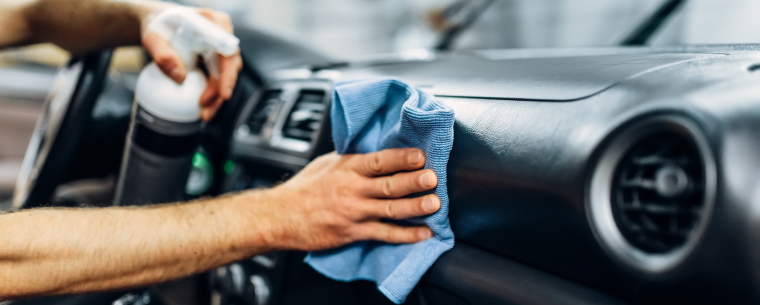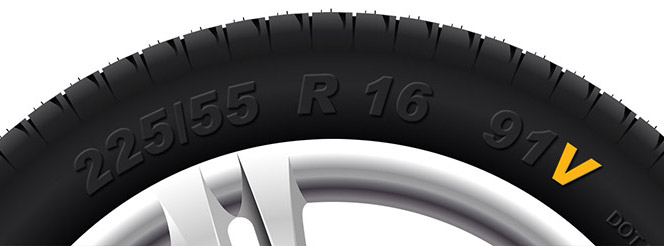How to Clean Your Car’s Interior
Published on: Wednesday, 09 February 2022 | Author: Jack Dreyer
There’s nothing more awkward than getting into someone’s car and having to wade through rubbish to clear your seat. Don’t be that person.
While the UK’s drivers aren’t bad at keeping the outside of their cars clean, the inside is another story. So, when was the last time you gave the inside of your car a clean?
We get it. If it’s been a while since your last valet, cleaning your car can seem like a challenge. But, if you use the steps in this blog, you can break down the car-cleaning task into manageable chunks and restore your vehicle back to its former glory in no time at all.
Clear the clutter
Before you do anything else, clear the decks. If the weather is nice, open up all the doors of your vehicle and sort the clutter out into piles on the ground: one for items that need to remain in the car, one for things that should live in the house, and another for general rubbish. Be sure to recycle the litter left over if possible.
This is the best way to begin cleaning so you can really see what you’re working with. At this point, it might also be a good idea to check what things you actually have in your car. Do you carry a first aid kit? Is your owner’s manual in the glove compartment? What about the reflective triangle and high vis vest in the boot?
A few things you might like to add include:
- Jump leads or a jump-starter box
- A portable mobile phone charger
- Water and non-perishable food in case of an emergency
- An ice scraper and windscreen de-icer
Get the hoover out
Once the car is clear of debris, it’s time to suck up all the dirt and crumbs. Make sure to remove the footwell mats and hoover them separately. You might even like to give them a shake or a bang against a wall to knock the dust out.
A regular household vacuum works fine, especially if it has plenty of attachments for getting in the nooks and crannies between the seats and in the cup holders too. To avoid damaging the fibres of the carpet, use a soft brush head tool to remove the dirt. You could also make use of carpet cleaning products like Febreze to keep your car fresh.

Wipe down the surfaces
High-touch points
Within a vehicle, there are always what’s known as ‘high-touch points’. These are areas that encounter contact almost every single time the car is used; for example, the steering wheel, seatbelts, handbrake, gear stick, and indicators.
Using disinfectant wipes, dashboard polish, or even a cloth soaked in warm soapy water, wipe down these surfaces in your car.
A microfibre cloth is the best tool to use, however. Microfibre is perfect for ensuring a smooth finish as the fibres do not allow dirt and debris to stick to them. On a regular cloth, this sediment may stick and scratch surfaces while you wipe. If you’re using any sprayable products, it is wise to spray them onto a cloth instead of directly applying them to the surface to avoid residue marks and/or staining.
Leather
In most vehicles, a high proportion of the front area is made from leather which requires special care to keep clean. The seats, dashboard, and steering wheel are very often leather, for example. For these areas, upholstery wipes can be used, or even specialist leather polish.
However, it is advised that you do not apply any product to the steering wheel (or the pedals for that matter) as it can become slippery.

Give the windows a clean
Another core part of keeping your vehicle clean is polishing the glass.
While car washes clean the outside windows and windscreen, the inside windows are often left grubby. Especially for car drivers with young children in the back, windows gradually get covered in fingerprints and other smudges over time. To combat this build-up, use a standard window and glass cleaner and a clean cloth to give them a wipe.
To avoid streaks, use a circular figure of eight motion when polishing and use a soft cloth. Don’t forget to do the back windscreen and smaller corner windows too.
Kill the germs!
Now your car is visibly clean, it’s time to start tackling the germs you can’t see. Since the COVID-19 pandemic, drivers have become increasingly conscious about the hygiene of their vehicles.
While you’d expect that disinfecting sprays would perform best, the most effective way to fight against germs is good old fashioned soap. Soap is great at washing away oils when nothing else can and the same goes for germs. So, soap and warm water solution is ideal for this and doesn’t harm your car surfaces (providing you don’t scrub it too hard).
What’s more, some household cleaning products such as bleach, hydrogen peroxide, and thinners can harm the materials in your car so take care when applying them.




